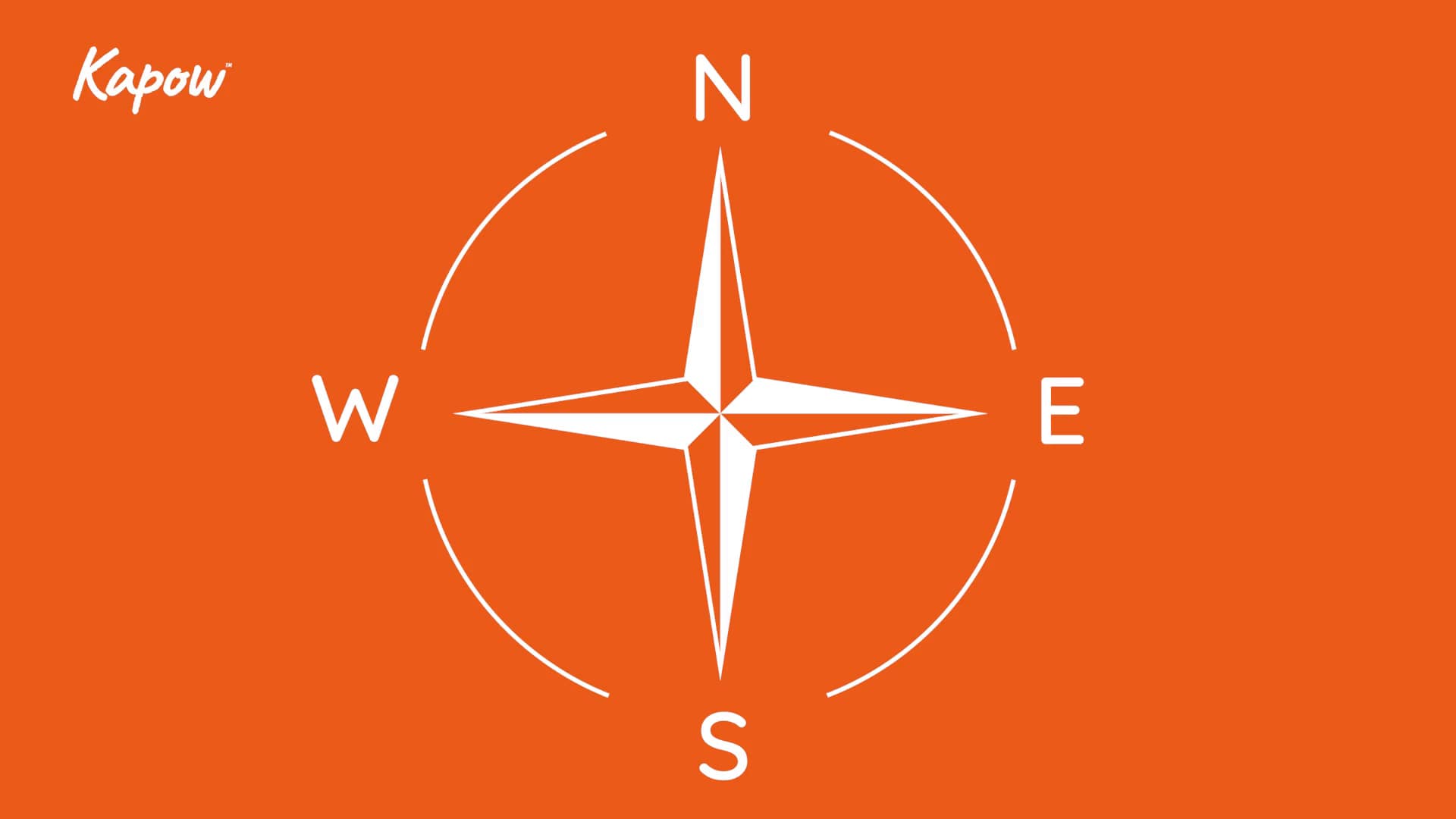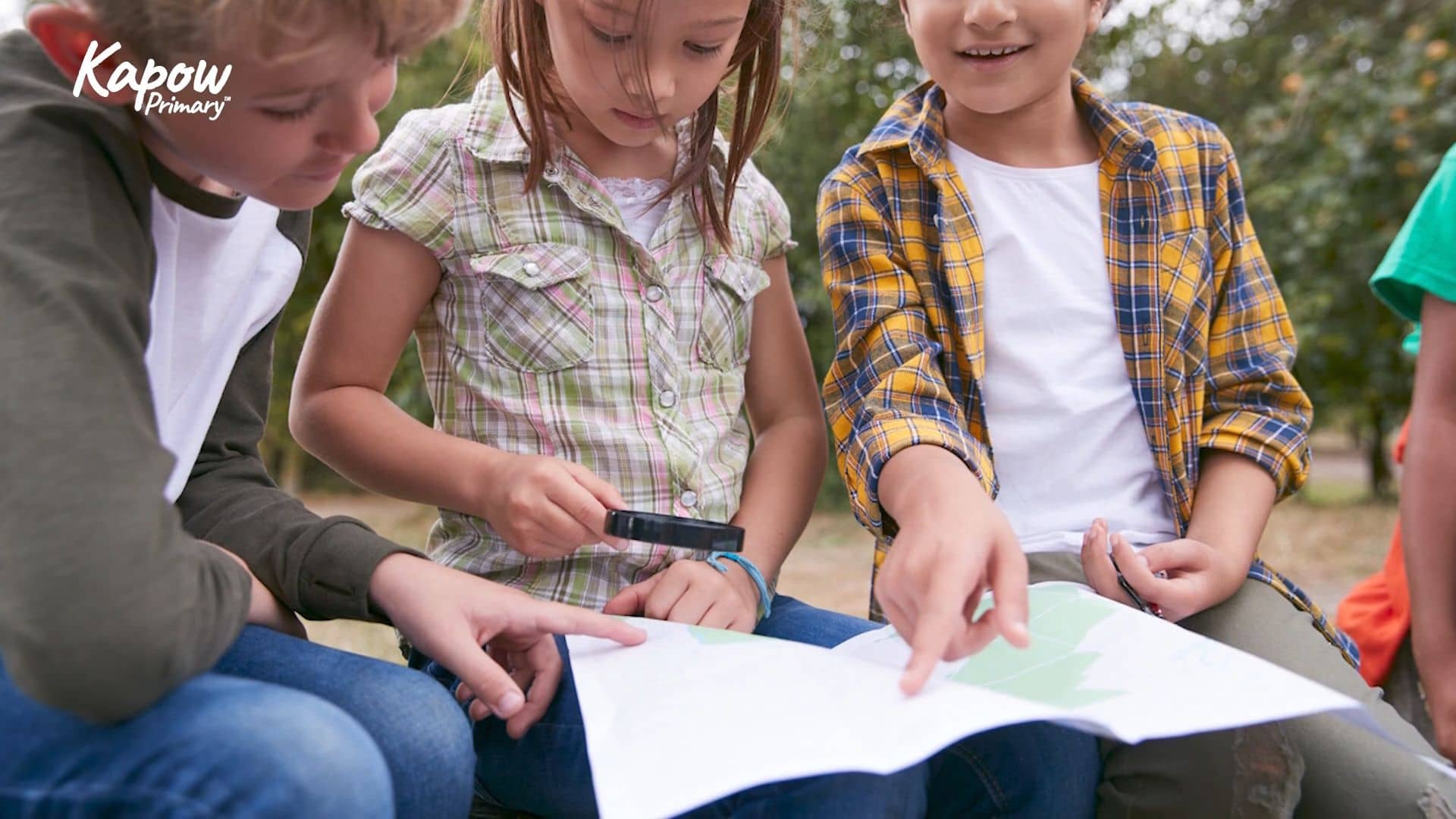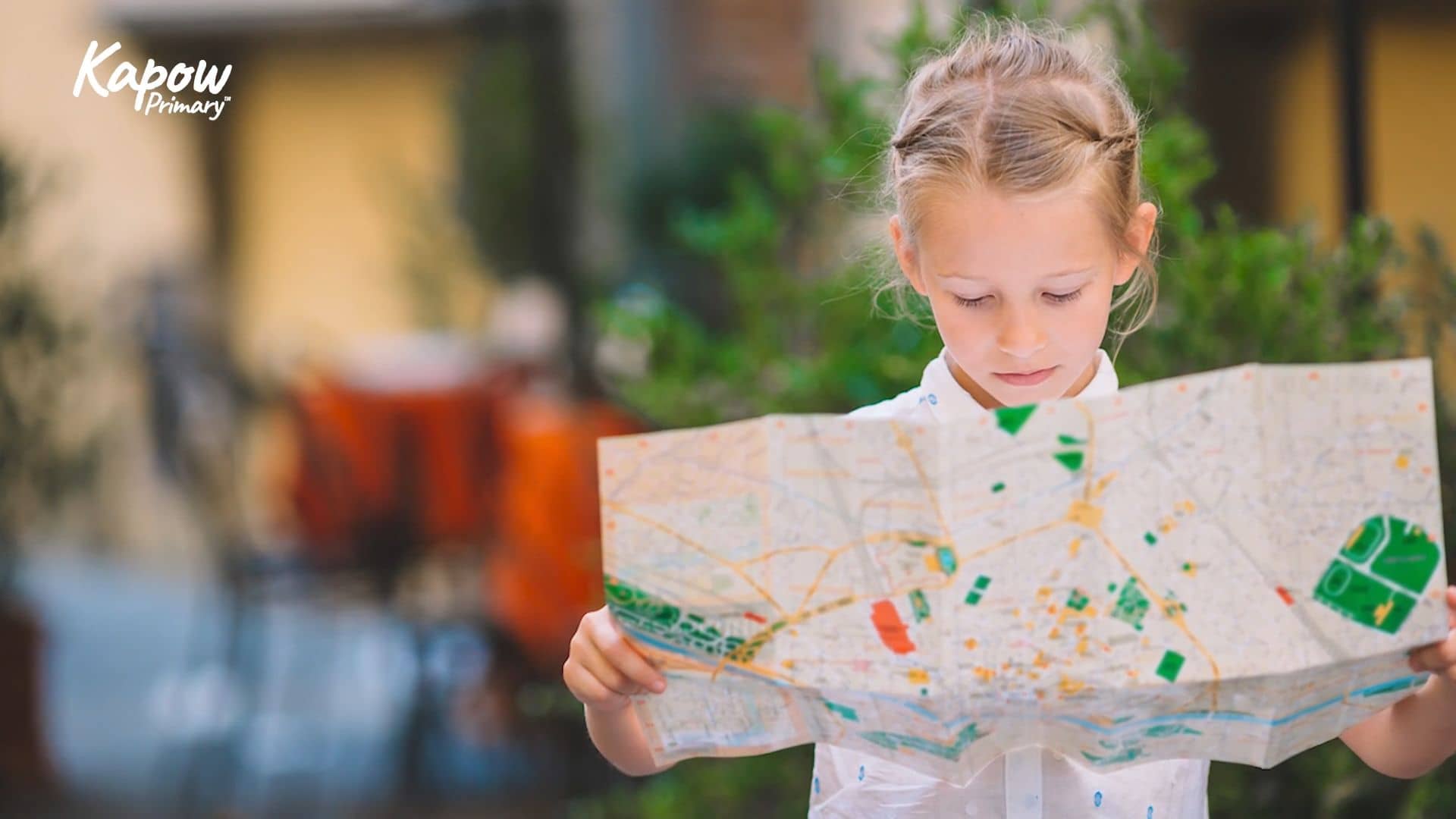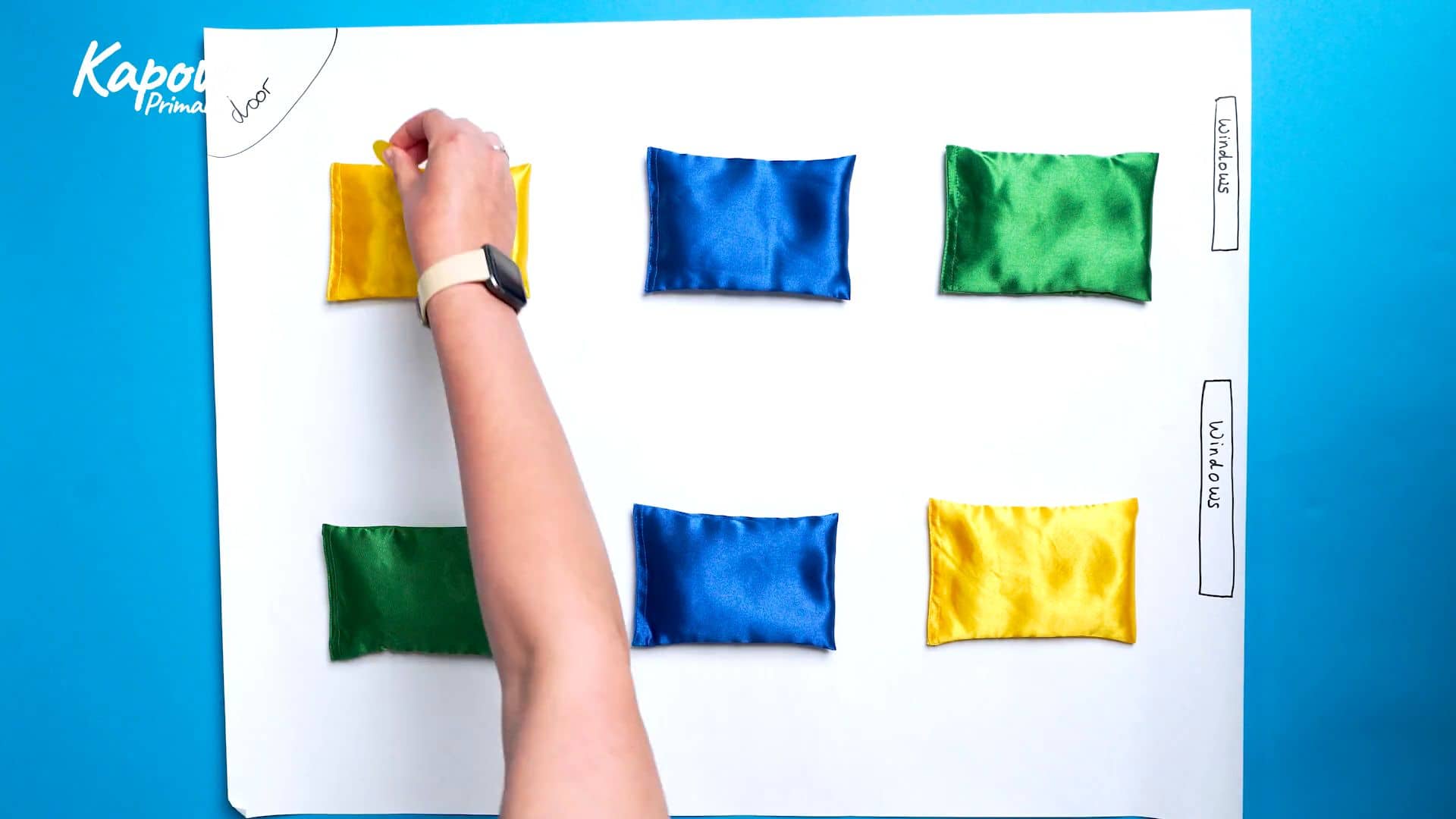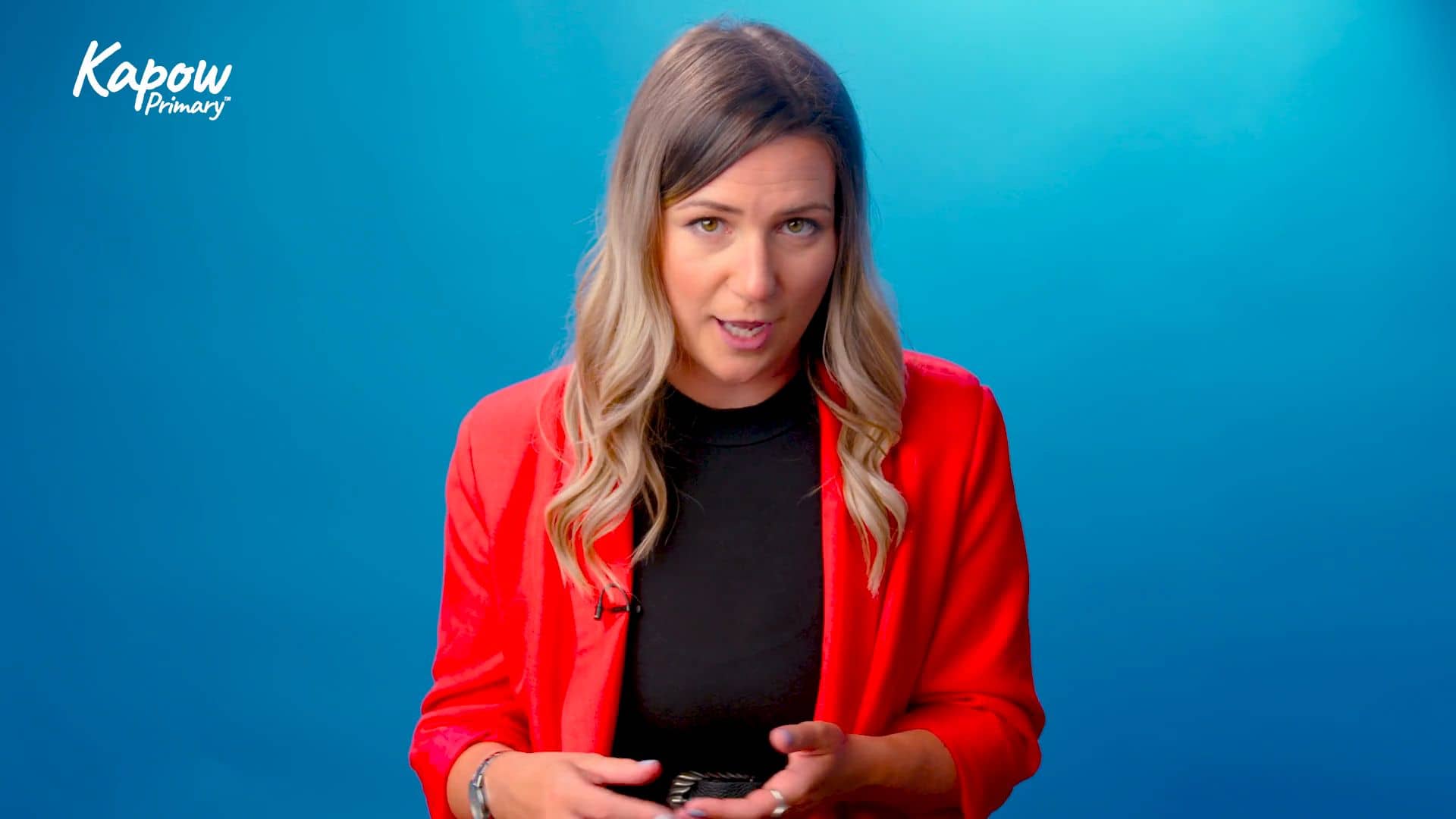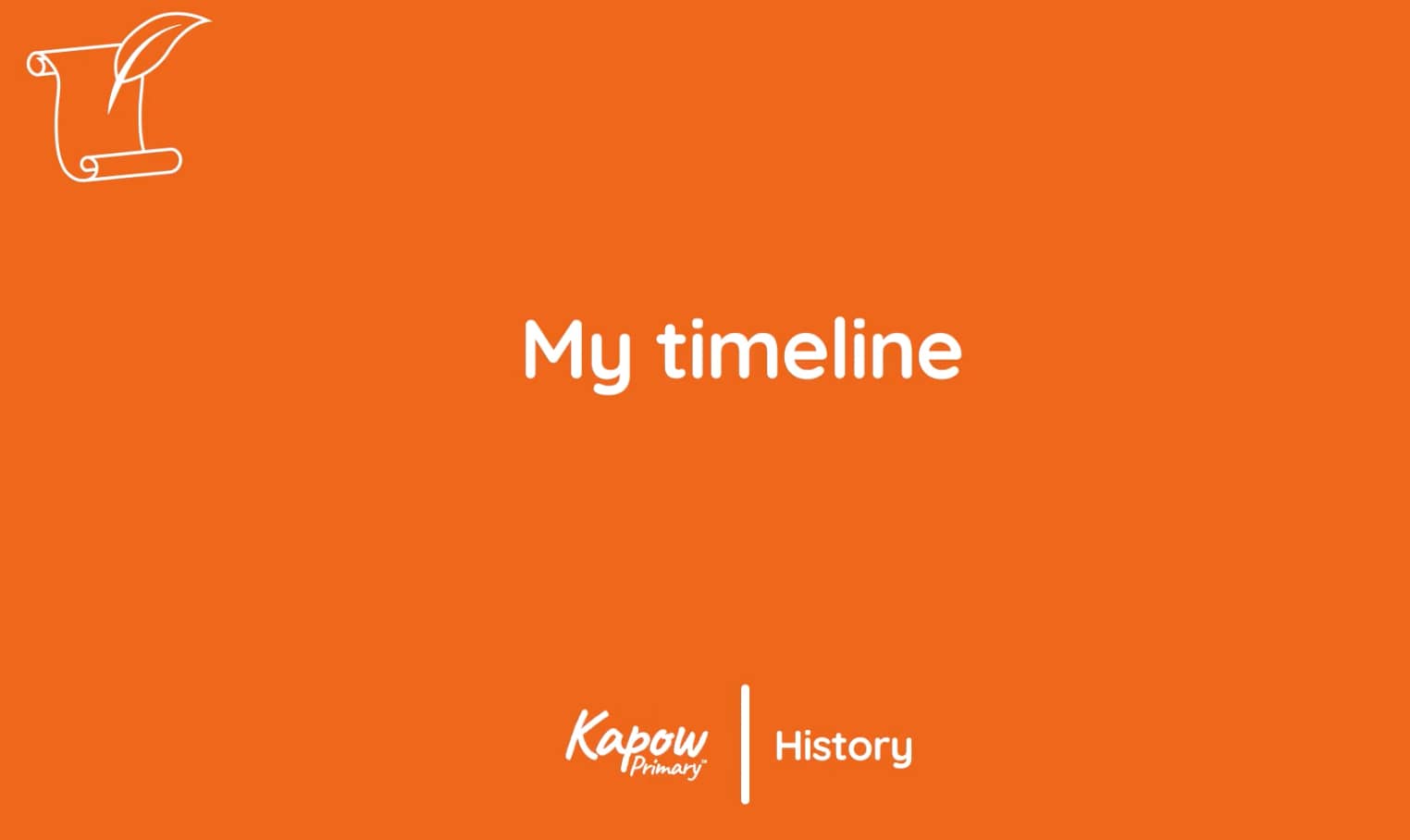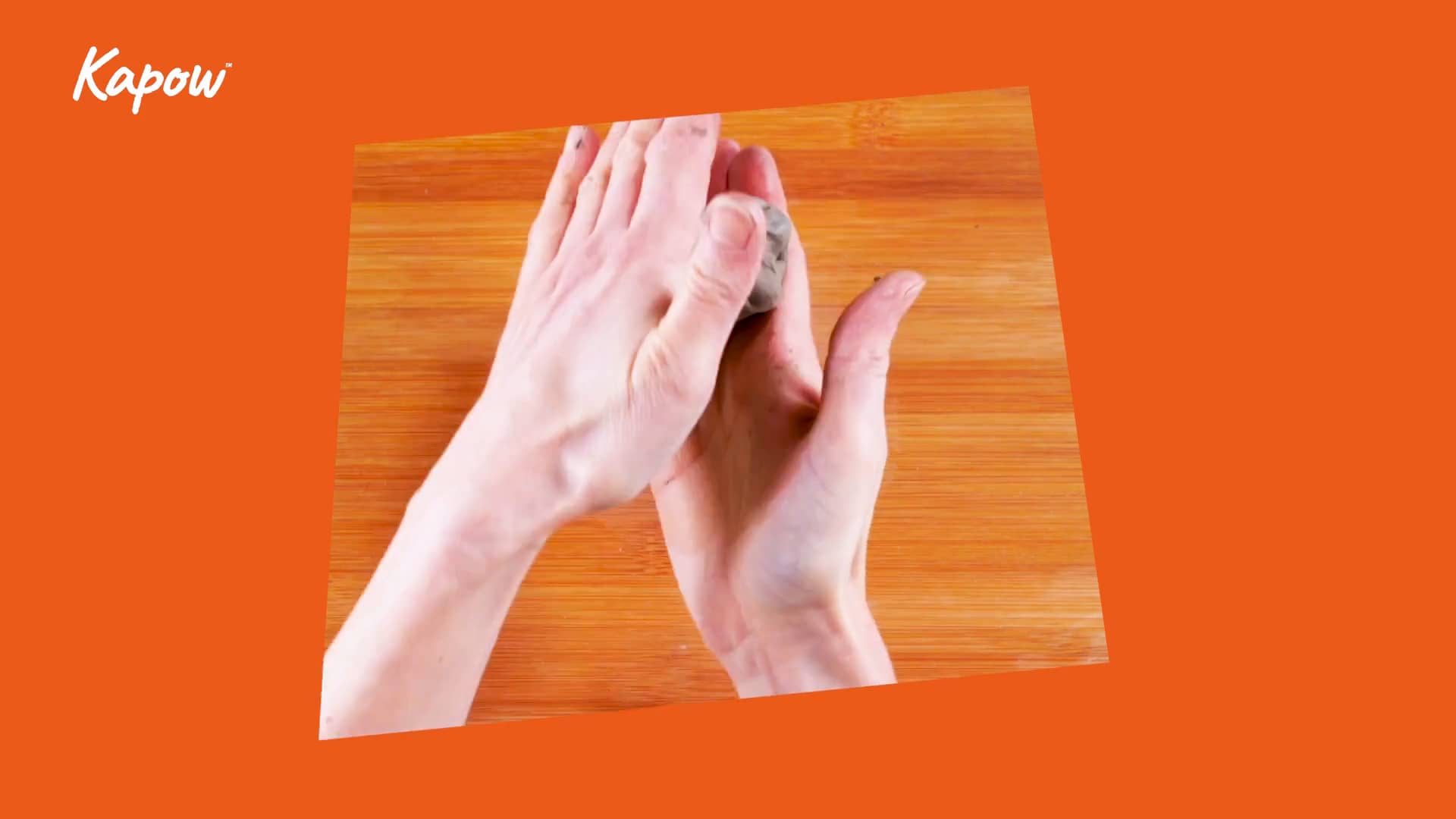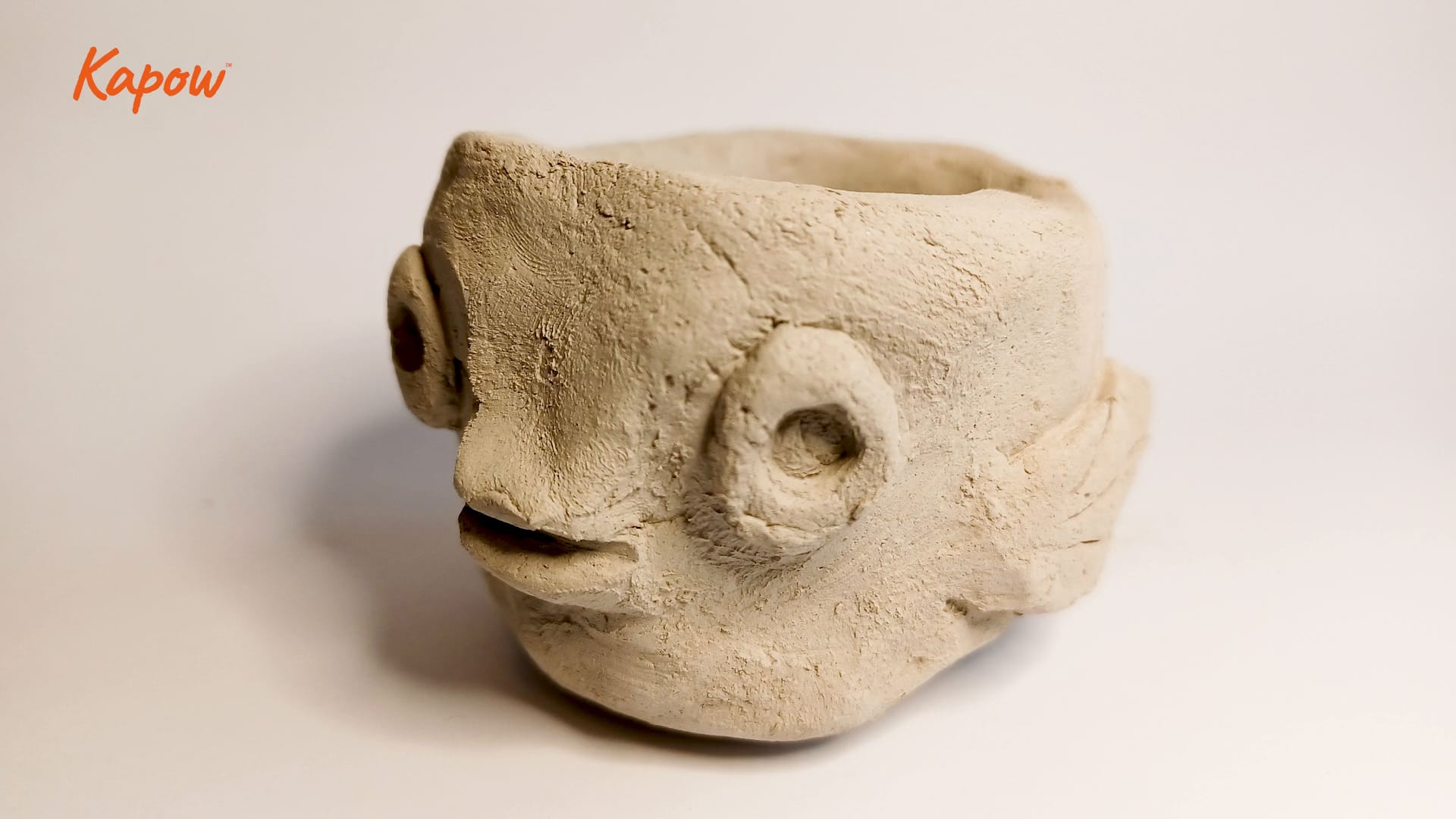Children learn north, east, south and west through a fun, rhythmic Geography song that supports spatial awareness and map skills.
year: Year 2
Teacher video: Playground designs
Teacher video: Playground questionnaires
This Geography video supports teachers in guiding Year 1 pupils to explore playground spaces, collect and analyse feelings data, and consider improvements through enquiry-based fieldwork.
Teacher video: Drawing maps
This video supports teachers in introducing early mapping skills to KS1 pupils through collaborative map drawing, use of symbols and directional language.
Pupil video: Messy maps
This Geography video shows pupils creating a messy map of their classroom, using objects to represent features and practising directional language to explain their layout.
Teacher video: Messy maps
This video supports teachers in introducing aerial perspective and map symbols through collaborative 3D messy map activities using classroom objects.
Pupil video: My timeline
This Kapow pupil video is part of the Kapow History scheme of work. It helps pupils understand what a timeline is and how it shows events in the order they happened. Pupils learn that the word past describes things that have already happened, while the present is what’s happening now. Timelines always begin with now and go backwards into the past, helping us see how time passes.
Pupils are encouraged to create their own simple timelines, starting with the day they were born. They can add key moments like starting school, getting a pet, or beginning Year 1. This helps them understand that their own life has a history and introduces them to the idea of sequencing events in chronological order.
Pupil video: Clay modelling techniques
This video introduces pupils to key hand-building techniques for working with clay, including shaping, rolling and mark making.

